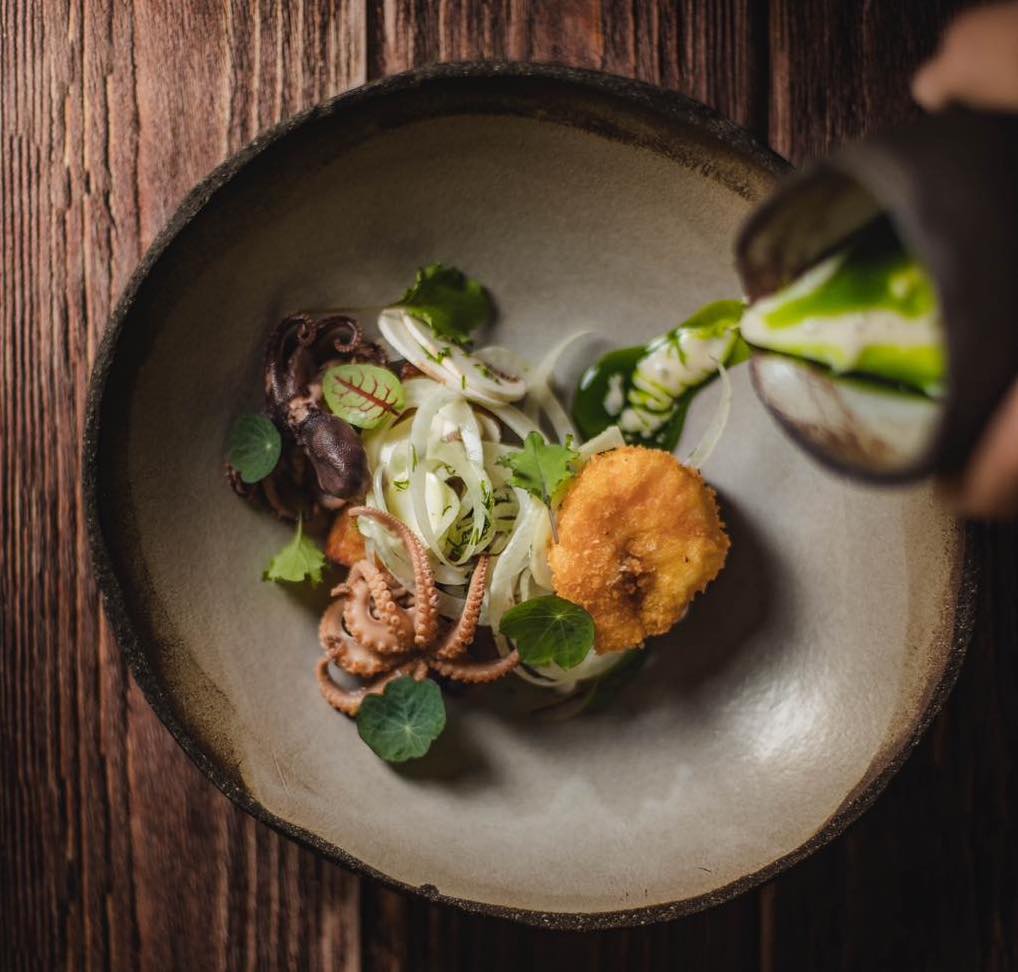Sometimes, you don’t want to go crazy, you just want to have a good time for a few hours, with familiar flavors and friends. If you’re lucky, hobby chefs will treat you to a casual lunch, but even if you don’t have such an invitation, don’t worry: you’ll find it not far away in the outskirts of Budaörs. Because being a guest at the Pallag family offers something only a few things can—come and join us for a meal next door!
They say that talent can really shine if it can reveal itself in a self-identical way. Dávid Pallag is undeniably young, but the world of fine dining has long since absorbed him, having been a finalist in the Hungarian competitive cooking show Konyhafőnök, worked at MÁK, Tanti, and at various restaurants in Saint Tropez and at Lake Balaton. When the pandemic broke out, he and his wife Fanni wanted peace and stability, so he took a job in Budapest. It was definitely a learning curve, but he didn’t feel the security he was looking for—he wanted to cook and at the end of the day go home to his family, including his baby girl, feeling calm and content. He believed in the power of fate but was still caught off guard when the landlord of a shabby pub in Budaörs called to say that the place was for rent again and he could do something with it.

With the help of his father-in-law and friends, they tore the business down to the ground, rebuilt it taking one step at a time, and in 2020, Rutin opened. He had neither investors nor great expectations—he dreamed of a place that was casual, cool, where you could pop in like you would visit your best friend, except that this friend is a little (well, a lot) more talented with food than usual. The menu was initially nothing but baked goods and a breakfast menu, later deli items, and then, when the health and safety regulations allowed it, chicken paprikash and grilled chicken. If he sold 10 portions a day, the next day he would use the money to finance the food on offer. There were two of them with his wife when they could manage it with their daughter. In good weather, he would set up on the terrace to grill fish, organize live music, and work from morning till night, but his hard work was rewarded, as the people of Budaörs soon grew fond of him. They became indigenous, thanks in part to the fact that they actually came home and moved above the restaurant.
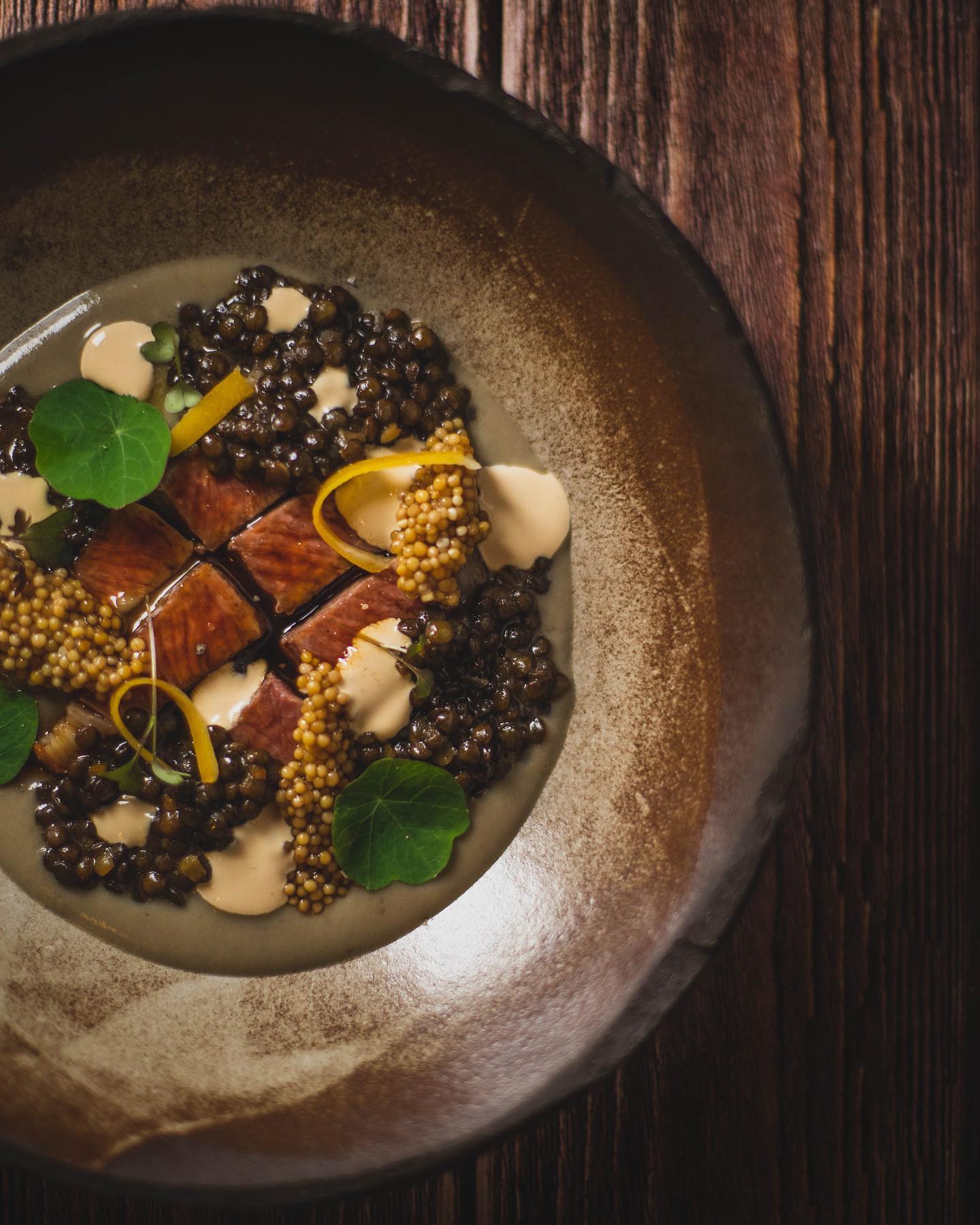
Although the day-to-day running was constant experimentation, he did not compromise on a few principles: he wanted to bring an honest, cozy, but high-quality cuisine. He wanted his guests to really feel like they were visiting their neighbors, and to taste dishes that were familiar, that brought back memories but also had a few cool twists, with just the right routine and boldness. That’s why the restaurant is called ‘gasztrolubickoló’ (gastronomy pool—the Transl.) because, as David says, you can get drunk and have a good time. He missed traditional Hungarian gastronomy done properly, so he decided to present this world in the show kitchen.
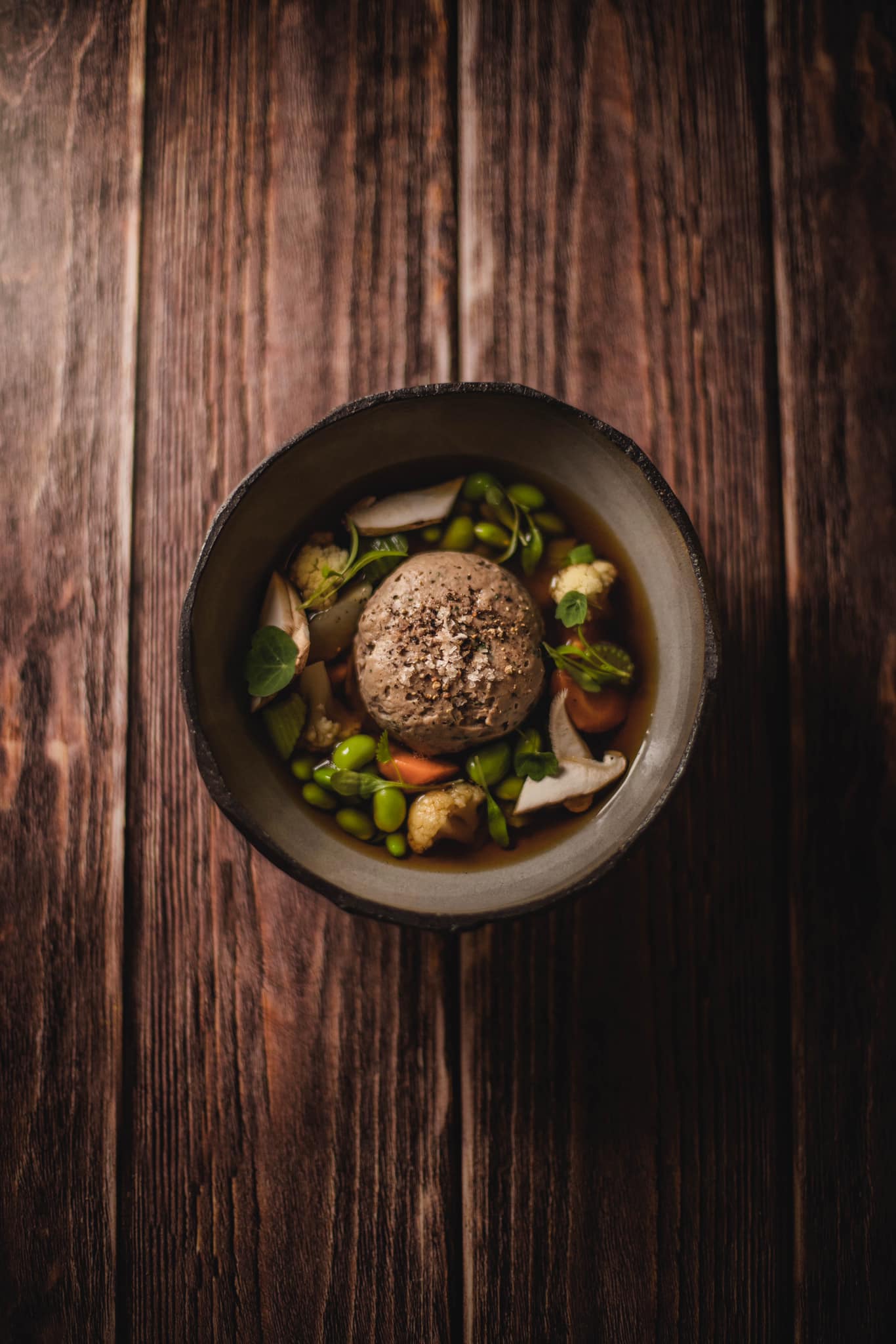
There are two menus, a permanent one and a chef’s offer: the former features favorites such as beef goulash, Monte Nevado mangalica loin stew, or mákos guba (sweet poppy seed bread & butter pudding—the Transl.), but don’t be fooled by the basic food names. They are the result of amazing skill, technical virtuosity, and cheeky creativity: a wealth of textures and shapes come together on the plate, yet the result is neither too bold nor too confusing. The real playground is the ever-changing chef’s menu, which on our visit included, for example, browned buttery celery creamy soup with salmon, hazelnuts, and Moroccan lemon, and panko breadcrumb-fried cauliflower with sesame tare (a sweet soy sauce), yuzu, and wakame. You think you know what you’re getting, but it’s an incredible surprise what arrives on the plate: creamy, light, foamy, crunchy, with a great balance of flavors—the vegetarian main course is practically the “heavenly version” of fried cauliflower.

It shows an experimental attitude that even on the website you can see the previous menu—Dávid is honest about when something works and when it doesn’t. Whatever is a successful combination is put on the permanent menu, displacing another dish. His goal is not to be better than everyone else, he simply wants to improve, learn and most importantly create at home, for both his guests and his team. For this reason, he now has 11 people in the kitchen (including his main partner Tamás Botos, with whom he goes way back), which takes some of the pressure off him at times, while they all come together as a family. The team spirit is palpable during and after servicing, when they finally have time to take a break, but also when an unexpected problem arises. For instance, when it turns out that one of the ingredients for a dish is out of stock, they need to quickly source and cook a meal—so they go for supplies, jokingly, in their dirty chef’s outfits.
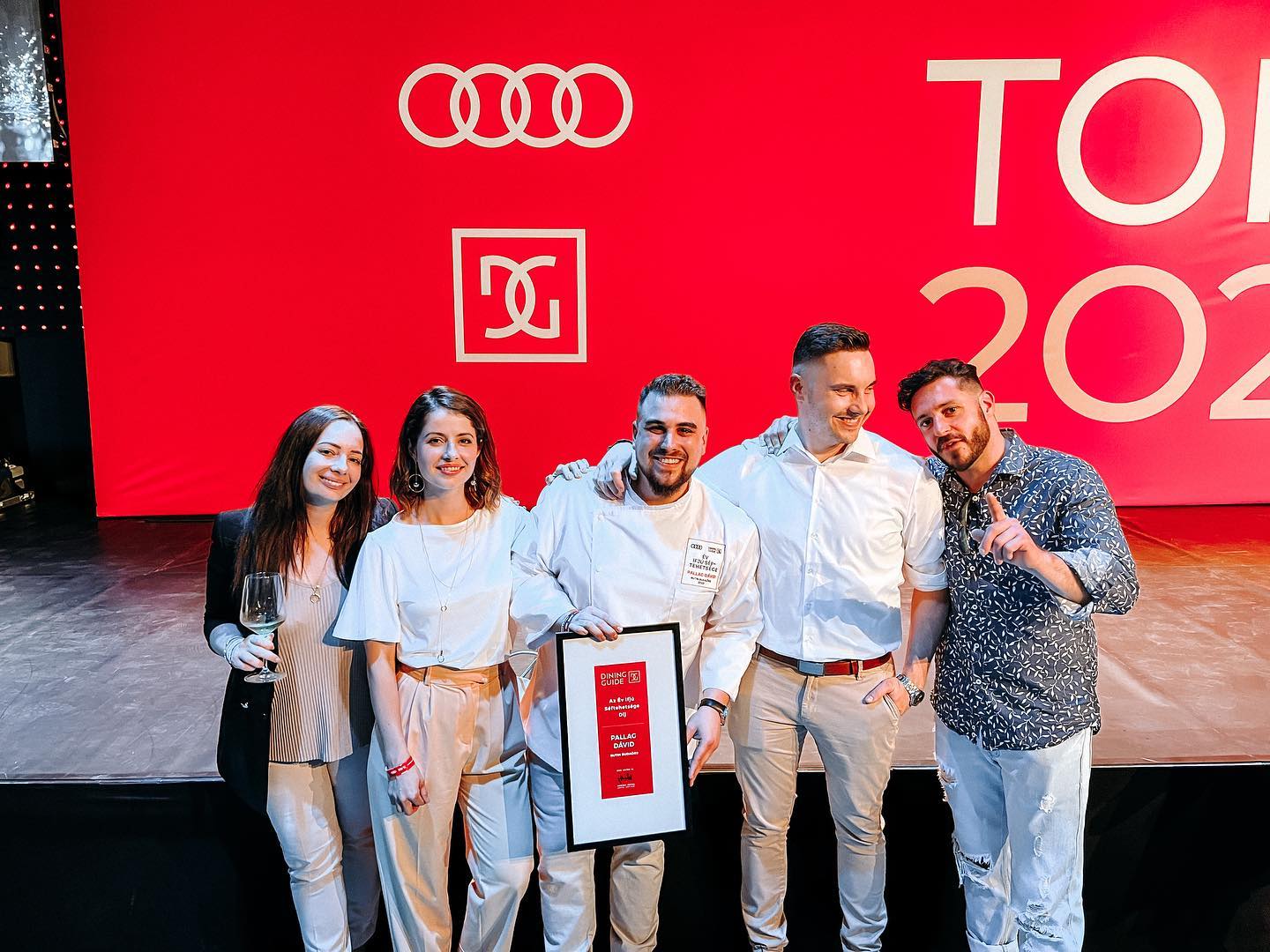
But alongside the easygoing attitude, there’s also constant planning, which shows that Dávid thinks like an owner and a family man. The restaurant opened during the epidemic and he knew exactly that he needed a plan B and C, perspectives, and sometimes a way to get ahead. He wanted a stable base to come back to, especially as last year he won the Young Chef of the Year award at the Dining Guide Gala, but the restaurant was also included in the Guide Michelin as a recommended place, so the spotlight grew brighter on them. Rutin has its limitations, so he started to convert the 80-square-meter basement downstairs into a producer kitchen, and has also opened a new unit just a few weeks ago, two blocks away: MiMi’s Sweetaway & Pâtisserie. The primary aim was to serve cake orders that came in on a regular basis, but the restaurant is so popular for desserts that they wanted to offer an alternative.

Although the space is tiny, seating 10 people, pastry chef Fanny Czompa dreams up everything that Rutin means to her, with offerings that reflect the menu but feature different cakes. You can taste great classics, also with a twist—like goat cheese mousse brownie with strawberry filling or pecan carrot cake with citrus mascarpone cream, but there’s also macaron, sponge cake, and cake pop, with top-tier La Marzocco machine-brewed coffee. While they say they’re not aspiring to luxury, the nature-inspired green color (familiar from the flagship) and subtle details are elegant, as are the mosaic kintsugi motifs. The logo is the work of Balázs Pusztai and captures the brand’s playfulness, as the eponym is Dávid’s daughter, whose handprint also appears in many places. They’ve only just opened, but the counter is often empty by the middle of the day.
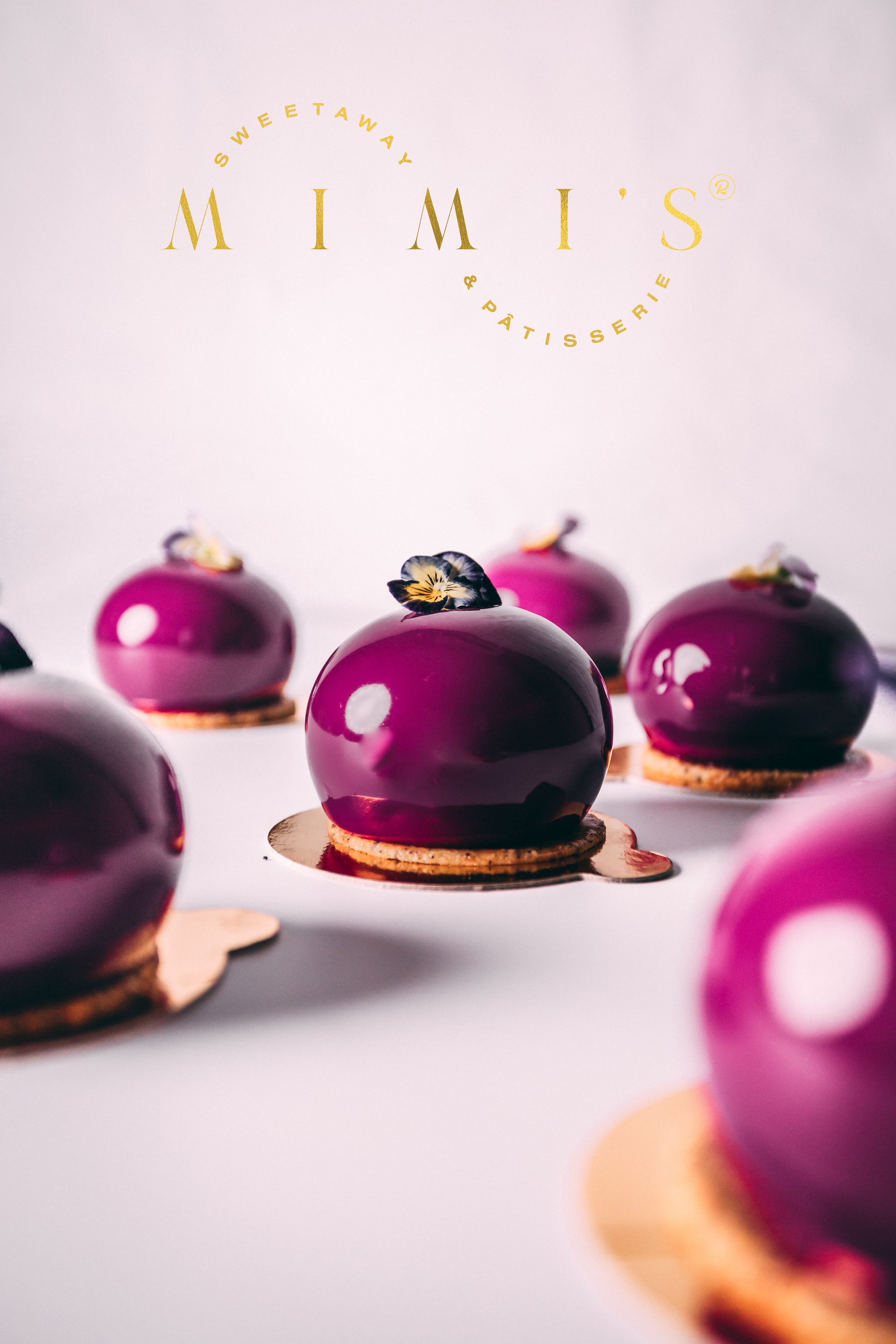
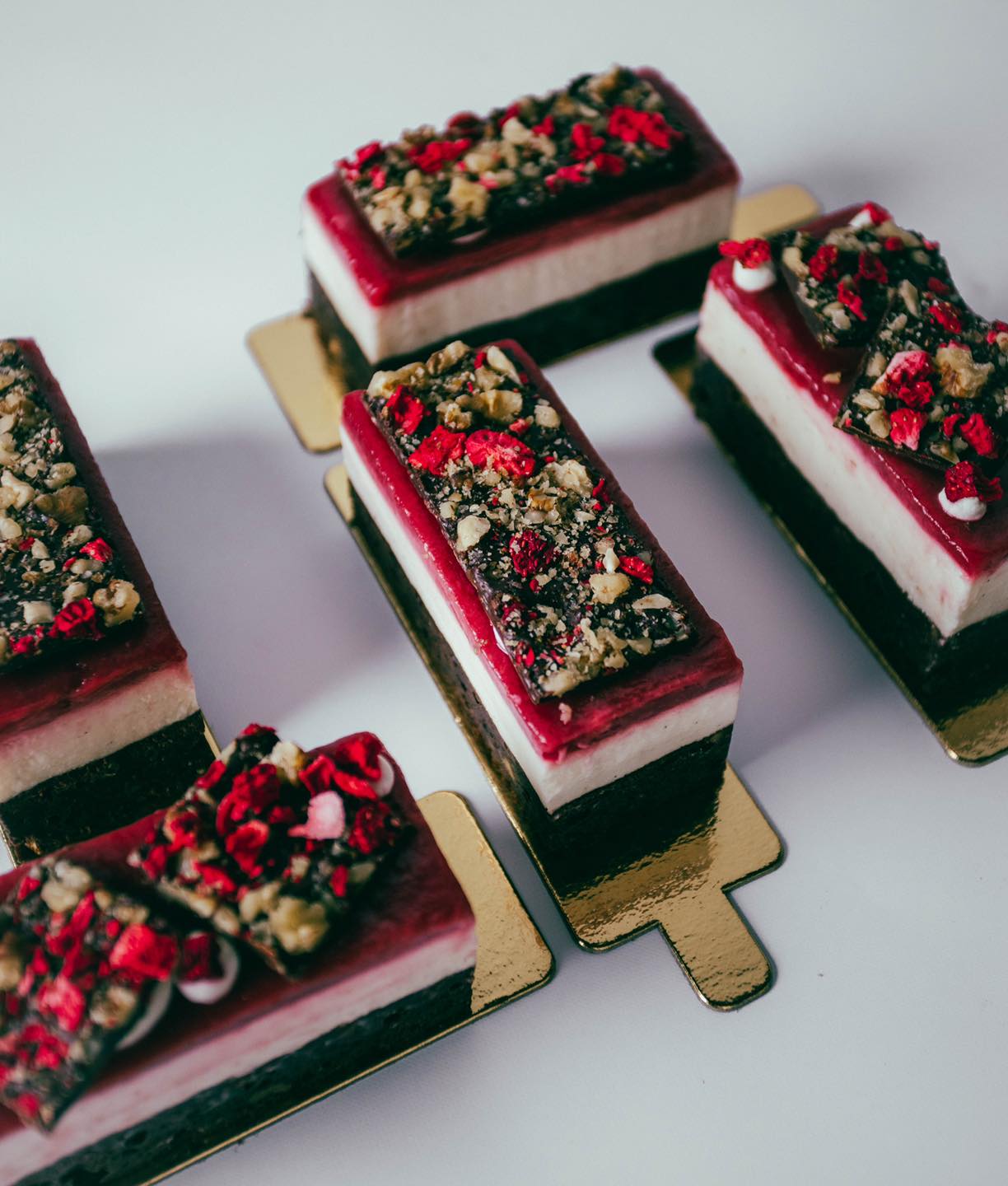
In the meantime, the next chapter is already in the pipeline, with the opening of a downtown street food venue in Budapest’s 6th district in the near future. The food will be prepared in the base kitchen, and only the finishing touches will be done on site. Another steady step, another experiment that will become routine in time. For Dávid Pallag and his family, perfection comes from daring to be imperfect and trying until you get what you want—the time and love of guests show day after day that they are on the right track.
Rutin | Web | Facebook | Instagram
MiMi’s Sweetaway & Pâtisserie | Web | Facebook | Instagram
Photos: Dániel Szántó
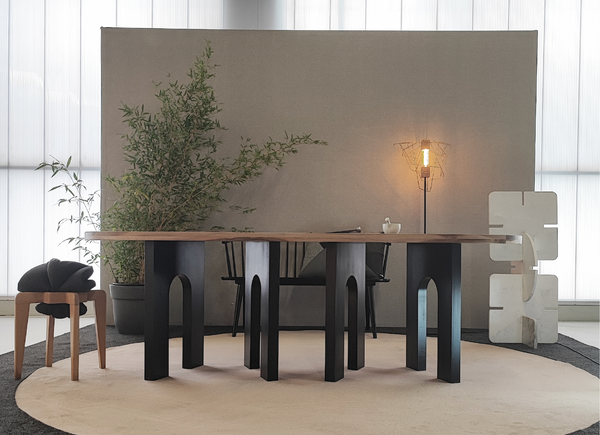
The first Transylvanian Design Week to kick off this Saturday
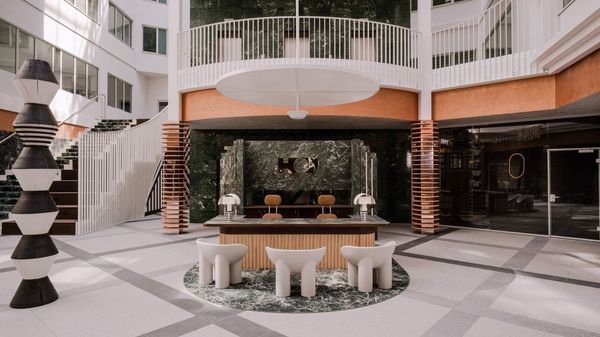
Postmodern reinvented—a unique office building in the heart of Warsaw










